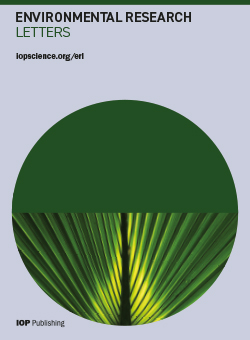Isotopic labeling evidence shows faster carbon release from microbial residues than plant litter
IF 5.6
2区 环境科学与生态学
Q1 ENVIRONMENTAL SCIENCES
引用次数: 0
Abstract
Carbon (C) release from plant and microbial residues is a primary pathway of energy flow from photosynthetic and metabolic biomass to carbon dioxide (CO2) in terrestrial ecosystems. Traditional view show that microbial residue C is more resistant to decompose than plant litter because their smaller particle sizes could be preferentially occluded in microaggregates with less microbial accessibility. However, we still lack a quantitative assessment (i.e. isotopic C labeling) to isolate the progressive release of C fractions from both plant and microbial residues. Here we used a global data set of 117 decomposition experiments that traced the 13C or 14C release of isotopically labeled plant and microbial residues to estimate the C release rates and turnover times by using a first-order exponential kinetics model. The average C release rates of crop, grass and tree litter were 7.78, 3.79 and 2.11 yr−1, which were significantly lower than microbial residues (13.07 yr−1). Although C release rates of both plant and microbial residues were positively correlated with site temperature, the mean turnover time of microbial residues was 2–6 times lower than plant litter. We suggest that a constraint in microbial and plant residues leads to a predictable pattern of C release during terrestrial decomposition, which could be included in Earth system models.同位素标记证据显示,微生物残留物的碳释放速度快于植物废弃物
在陆地生态系统中,从植物和微生物残留物中释放碳(C)是光合作用和代谢生物量转化为二氧化碳(CO2)的主要能量流途径。传统观点认为,微生物残余物中的碳比植物残余物更难分解,因为它们的粒径较小,会优先被微生物较难进入的微团聚体所包围。然而,我们仍然缺乏定量评估(即同位素碳标记)来分离植物和微生物残留物中逐步释放的碳组分。在此,我们利用全球 117 项分解实验的数据集,追踪了同位素标记的植物和微生物残留物的 13C 或 14C 释放情况,并采用一阶指数动力学模型估算了碳释放率和周转时间。作物、草地和树木废弃物的平均碳释放率分别为 7.78、3.79 和 2.11 yr-1,明显低于微生物残留物(13.07 yr-1)。虽然植物和微生物残留物的碳释放率都与地点温度呈正相关,但微生物残留物的平均周转时间比植物残留物低 2-6 倍。我们认为,微生物和植物残留物的限制导致陆地分解过程中可预测的碳释放模式,可将其纳入地球系统模型。
本文章由计算机程序翻译,如有差异,请以英文原文为准。
求助全文
约1分钟内获得全文
求助全文
来源期刊

Environmental Research Letters
环境科学-环境科学
CiteScore
11.90
自引率
4.50%
发文量
763
审稿时长
4.3 months
期刊介绍:
Environmental Research Letters (ERL) is a high-impact, open-access journal intended to be the meeting place of the research and policy communities concerned with environmental change and management.
The journal''s coverage reflects the increasingly interdisciplinary nature of environmental science, recognizing the wide-ranging contributions to the development of methods, tools and evaluation strategies relevant to the field. Submissions from across all components of the Earth system, i.e. land, atmosphere, cryosphere, biosphere and hydrosphere, and exchanges between these components are welcome.
 求助内容:
求助内容: 应助结果提醒方式:
应助结果提醒方式:


